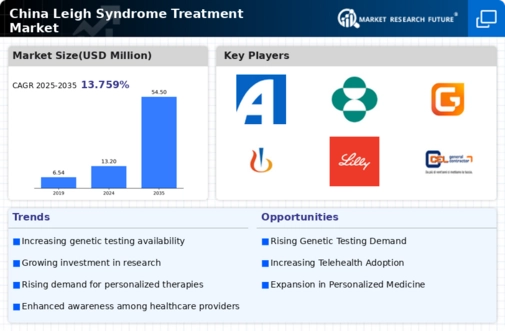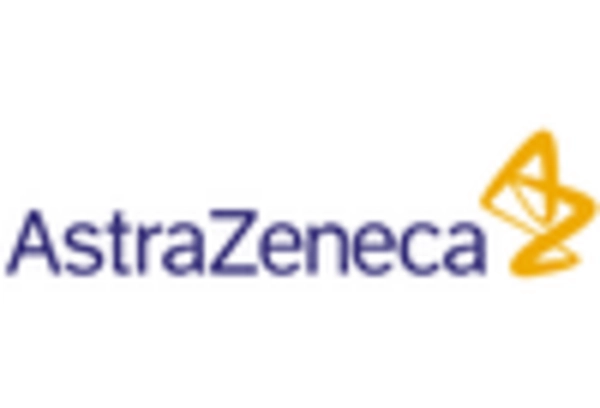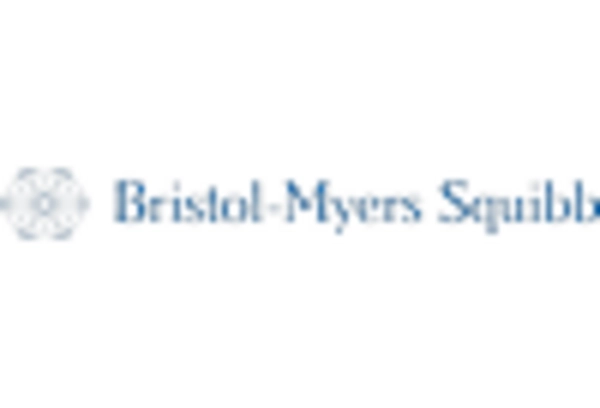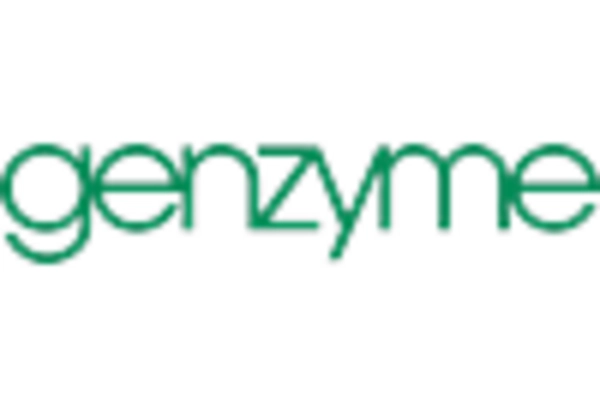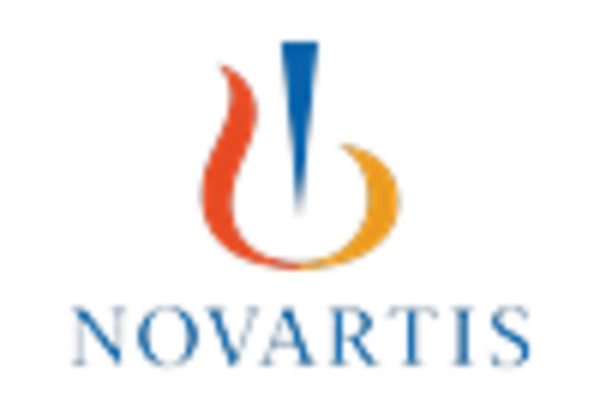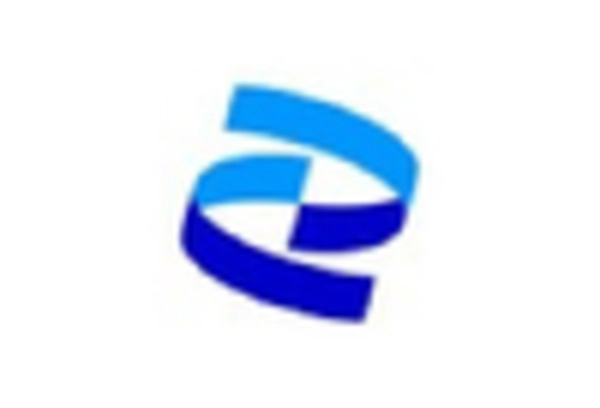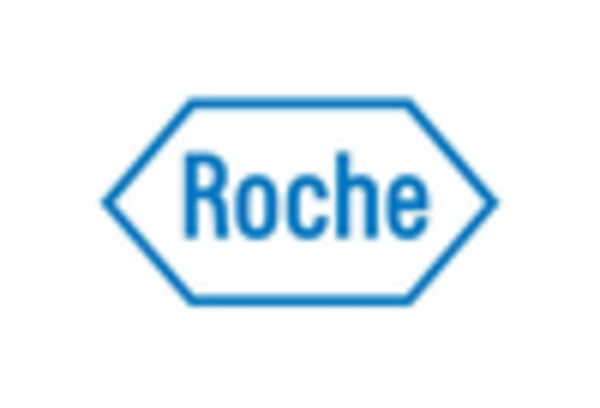Government Initiatives and Funding
Government initiatives aimed at addressing rare diseases are playing a pivotal role in shaping the leigh syndrome-treatment market. In recent years, the Chinese government has implemented policies to promote research and development in the field of rare diseases, including Leigh syndrome. Increased funding for research projects and incentives for pharmaceutical companies to develop treatments are likely to enhance the market landscape. For instance, the establishment of rare disease registries and research networks may facilitate collaboration among stakeholders, leading to more effective treatment options. As these initiatives gain momentum, the leigh syndrome-treatment market is expected to benefit from improved access to therapies and increased awareness among healthcare providers.
Rising Prevalence of Leigh Syndrome
The increasing incidence of Leigh syndrome in China is a critical driver for the leigh syndrome-treatment market. Recent estimates suggest that the prevalence of this rare mitochondrial disorder is approximately 1 in 40,000 live births. This rising prevalence necessitates the development and availability of effective treatment options. As awareness of Leigh syndrome grows among healthcare professionals and the public, the demand for specialized treatments is likely to increase. Furthermore, the Chinese government has been focusing on rare diseases, which may lead to enhanced funding and support for research and development in this area. Consequently, the leigh syndrome-treatment market is expected to expand as more patients seek diagnosis and treatment.
Growing Patient Advocacy and Awareness
The rise of patient advocacy groups in China is significantly influencing the leigh syndrome-treatment market. These organizations play a crucial role in raising awareness about Leigh syndrome, educating patients and families, and advocating for better treatment options. As awareness increases, more individuals are likely to seek diagnosis and treatment, thereby driving market growth. Additionally, patient advocacy groups often collaborate with healthcare providers and researchers to promote clinical trials and innovative therapies. This collaboration can lead to the development of new treatment modalities, further enhancing the leigh syndrome-treatment market. The growing presence of these organizations indicates a shift towards a more informed patient population, which may ultimately improve treatment outcomes.
Advancements in Diagnostic Technologies
Technological advancements in diagnostic tools are significantly impacting the leigh syndrome-treatment market. Innovations such as next-generation sequencing (NGS) and improved imaging techniques have enhanced the ability to diagnose Leigh syndrome accurately and promptly. These advancements facilitate early detection, which is crucial for effective treatment. In China, the integration of advanced diagnostic technologies into clinical practice is becoming more prevalent, leading to an increase in diagnosed cases. As a result, the demand for targeted therapies and treatment options is likely to rise. The ability to identify Leigh syndrome at an earlier stage may also encourage more research and development efforts, further propelling the growth of the leigh syndrome-treatment market.
Increased Investment in Rare Disease Research
Investment in research and development for rare diseases, including Leigh syndrome, is on the rise in China. Pharmaceutical companies and research institutions are increasingly recognizing the potential of this niche market. The leigh syndrome-treatment market is likely to benefit from this trend as more resources are allocated to the discovery of novel therapies. Collaborations between academia and industry are becoming more common, fostering innovation and accelerating the development of effective treatments. Furthermore, as the market for rare diseases expands, it may attract additional funding from venture capitalists and government grants. This influx of investment could lead to breakthroughs in treatment options, ultimately enhancing the leigh syndrome-treatment market.


